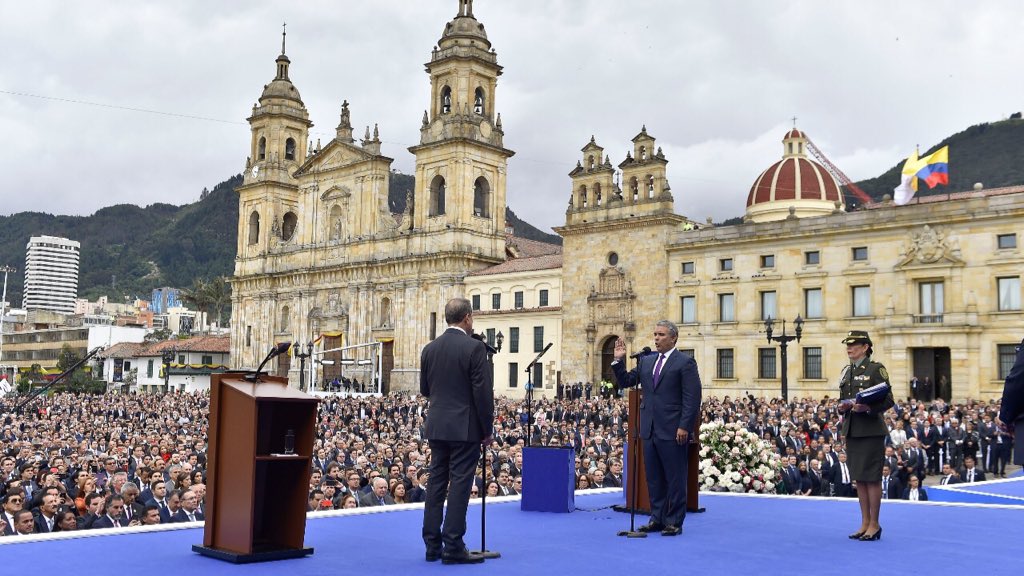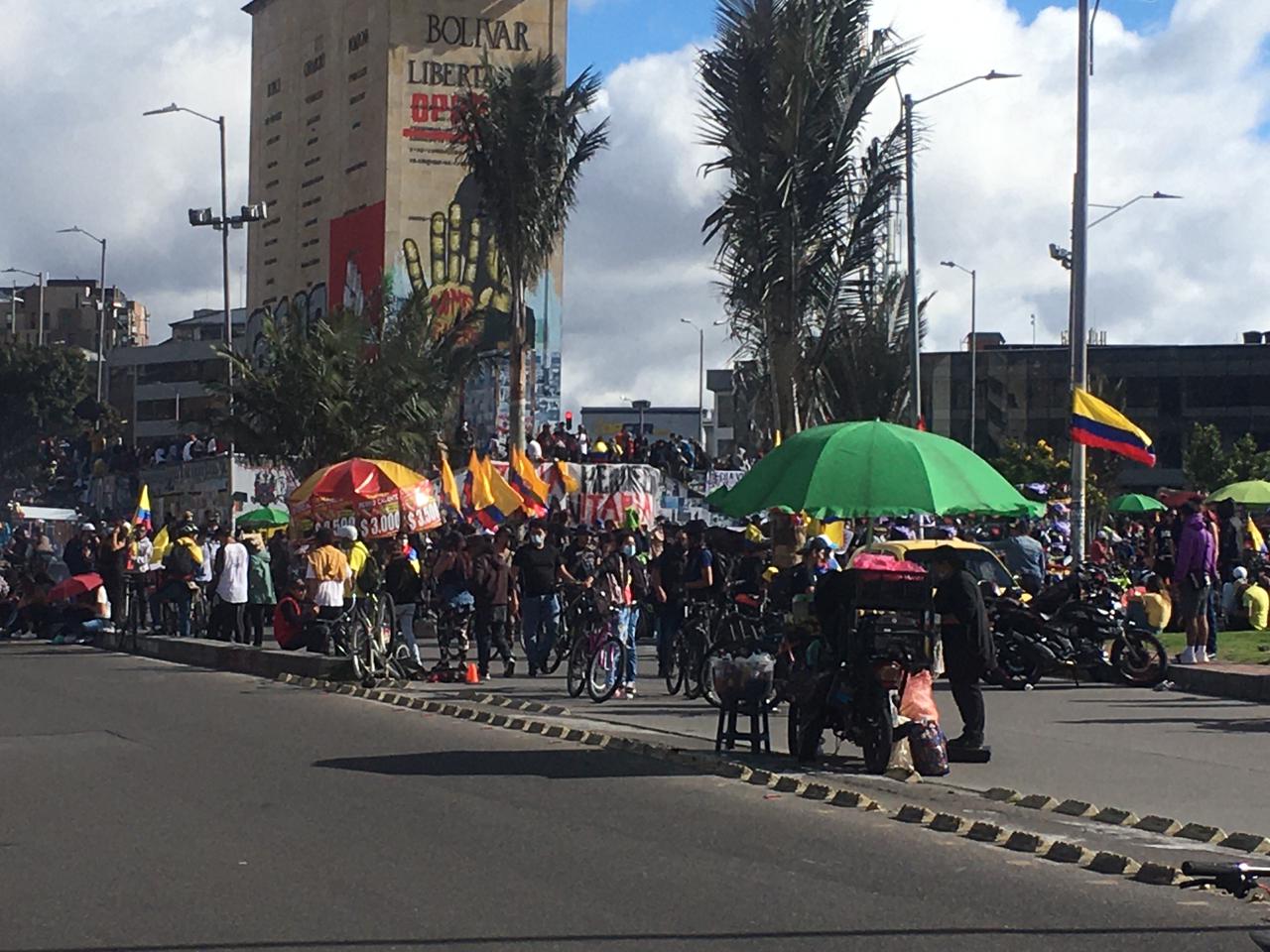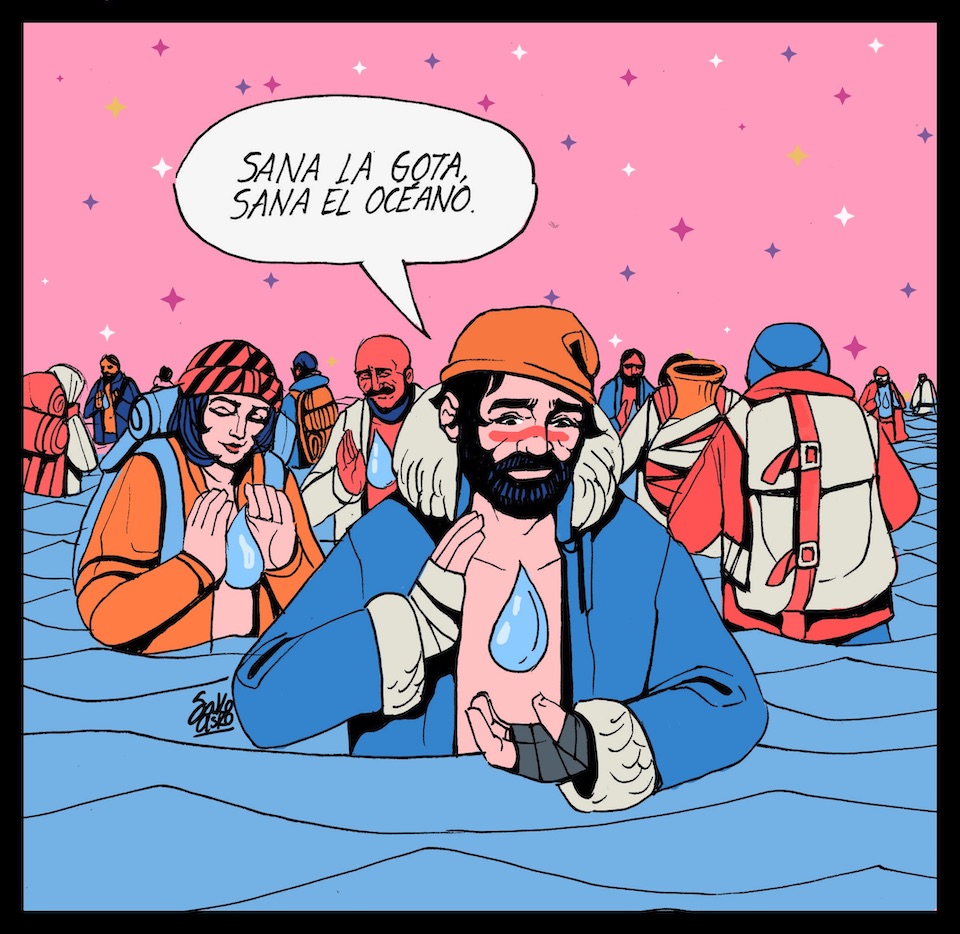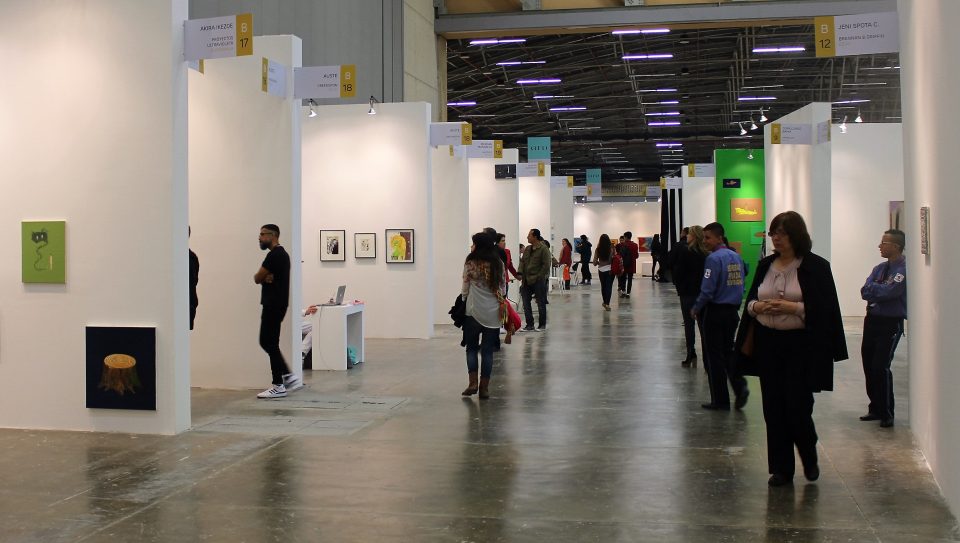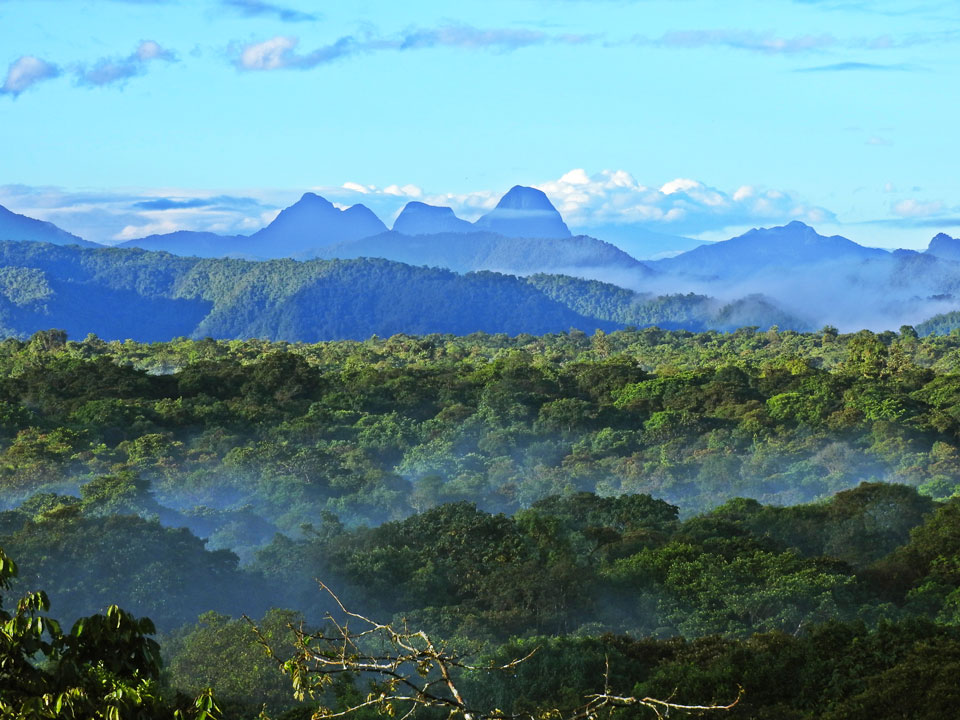
Breathtaking views at La Planada Natural Reserve, which was once Colombia’s most celebrated birding lodge and has now reopened. Photo Chris Bell
Located on the road between turbulent Tumaco and Pasto, Altaquer – bursting with rare birds and biodiversity – is shaking off its violent past and welcoming tourists again.
I can feel the intense midday sun burning the tops of my shoulders within minutes of stripping down and wading into the Río Mira to cool off. I’ve been up since before dawn, birding along an isolated dirt road fringed by palm oil plantations, just over 40km away from Tumaco. The birds have obliged all morning, and I’ve enjoyed excellent views of range-restricted species like the chunky little Orange-fronted Barbet and the elusive Ochraceous Attila. These baking hot coastal forests are a Colombian birder’s dream, home to a number of sought-after species; rare wanderers from nearby Ecuador that crossed the border once upon a time and settled for good.
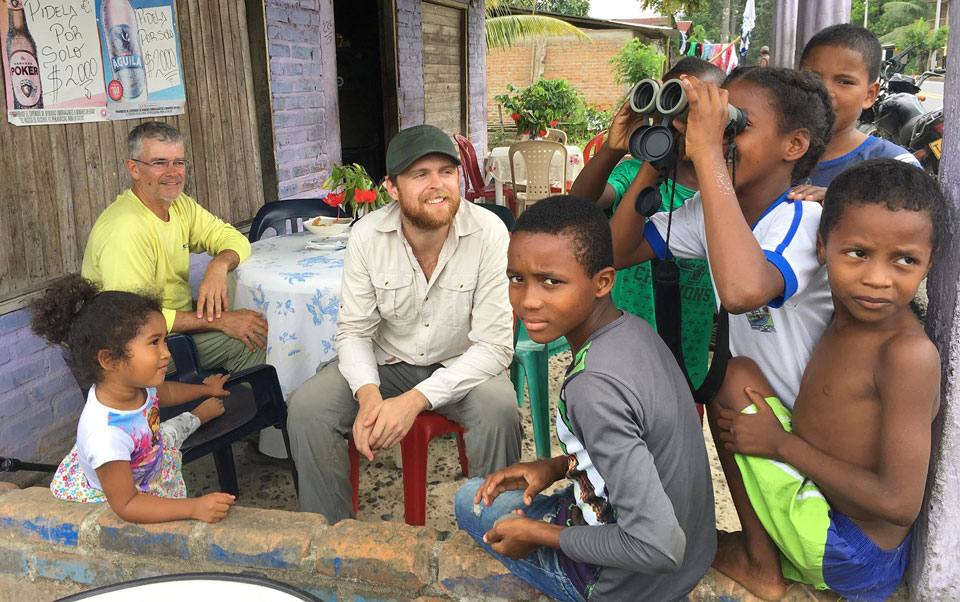
Children in Tumaco borrow Chris’s binoculars. Photo: Diego Calderon
However, this little corner of Colombia is also home to more hectares of coca than any other municipality in the country, and the murky Mira River is one of the principal corridors for drug trafficking. Dollars go upriver, coca paste comes back down. Just days earlier, protesting cocaleros were massacred by the police in Alto Mira, not far from where I’m currently treading water in the sunshine – a bloody setback for the already-fragile peace process. Today it’s calm and peaceful; nothing but a handful of sweaty birders and a local family trying to get their car unstuck from the sandy river bank. I close my eyes and let myself sink beneath the cooling water to escape the burning rays.
—
It was a little over a week ago that I arrived in the small town of Altaquer, Nariño on the road from Pasto to Tumaco. A place that seems permanently shrouded in low-lying clouds and always on the verge of a rain shower, Altaquer has seen more than its fair share of violence over the years. In the 90s it was a peaceful place, and the surrounding natural reserves attracted the world’s most prominent scientists who discovered new species of birds and frogs and made this corridor of Andean-Pacific foothills famous. Then, at the turn of the century, the armed conflict hit the town like a ton of bricks: FARC guerrillas arrived in the region, and the level of coca production skyrocketed as Plan Colombia displaced cultivation from neighbouring Putumayo. The army arrived to confront the FARC and, as was so often the case in Colombia, conflict and massacres followed. The villagers tell me that at one point 95% of Altaquer’s population were forcibly displaced and it seems as though everyone in the small town has a tragic story to tell, often in a disarmingly matter-of-fact manner. It’s an eye-opening glimpse at how people are forced to act when violence becomes the new normal.
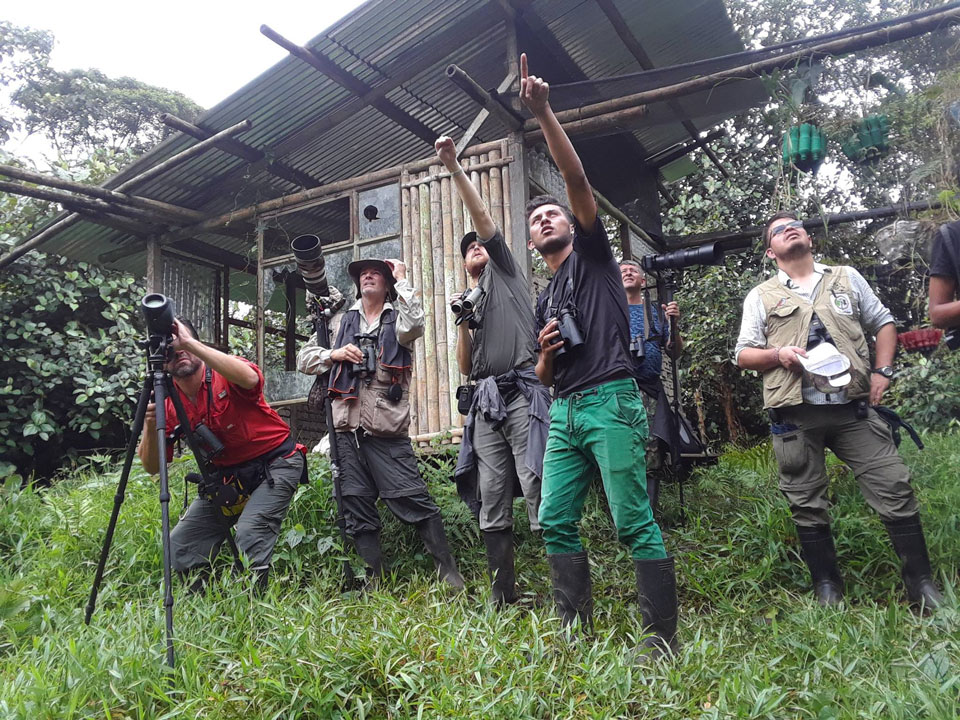
Birdwatching is putting Altaquer back on the map for the right reasons. Photo: Jenny Alvarado
I had come to this forgotten corner of Colombia to attend the 14th Festival de Aves del Piedemonte Andino-Costero, theoretically an annual bird festival – although they had to put it on hold during some of the worst years. The festival has a strong community emphasis and a commitment to inspiring a new generation of young ecologists to reject the pull of armed groups and coca cultivation and helps put Altaquer back on the map for the right reasons. Organised by FELCA, the Fundación Ecológica Los Colibríes de Altaquer, this year’s event was a roaring success: we see talks by local guides and ornithologists and the local kids get involved in painting classes and birding outings to the nearby reserves.
The natural reserves we visit during the festival are like a microcosm of Colombia’s incredible biodiversity. La Planada, located on Awa Indigenous territory and operated by the community, was once Colombia’s most celebrated birding lodge, before the indiscriminate killing of an administrative worker by FARC guerrillas forced the reserve to close its doors more than a decade ago. Since it reopened the Awa have been working hard to re-establish La Planada as a top-quality birding lodge and are well on their way to succeeding. It’s the only place in Colombia to see the beautiful Plate-billed Mountain Toucan, and the view from the mirador is simply breathtaking: a vast panorama of mist-shrouded jungle leading towards the distant snow-capped Cumbal volcano and the Black Hill of Mayasquer (which sounds like something straight out of Lord of the Rings, hugely appealing to me as a minor Tolkien nerd).
Rio Ñambi Reserve is just outside Altaquer and I spend two fantastic nights there with my fellow festival-goers before continuing on to Tumaco. Located in thick cloud-forest alongside a fast-flowing river, the reserve was opened back in 1991 when a previously-undiscovered bird species was found – the bird in question, the Chocó Vireo, is commonly seen in the fruiting trees around the lodge – and the warden, Mauricio, has worked there since that date. As with so many Altaquer residents, Mauricio has his tales of FARC death-threats and family tragedy, but he understandably prefers not to dwell on the past. His solemn enthusiasm for the future of the reserve and the children of Altaquer is inspiring, and it’s clear that the reserve is now part of his being, having worked there for a quarter of a century.
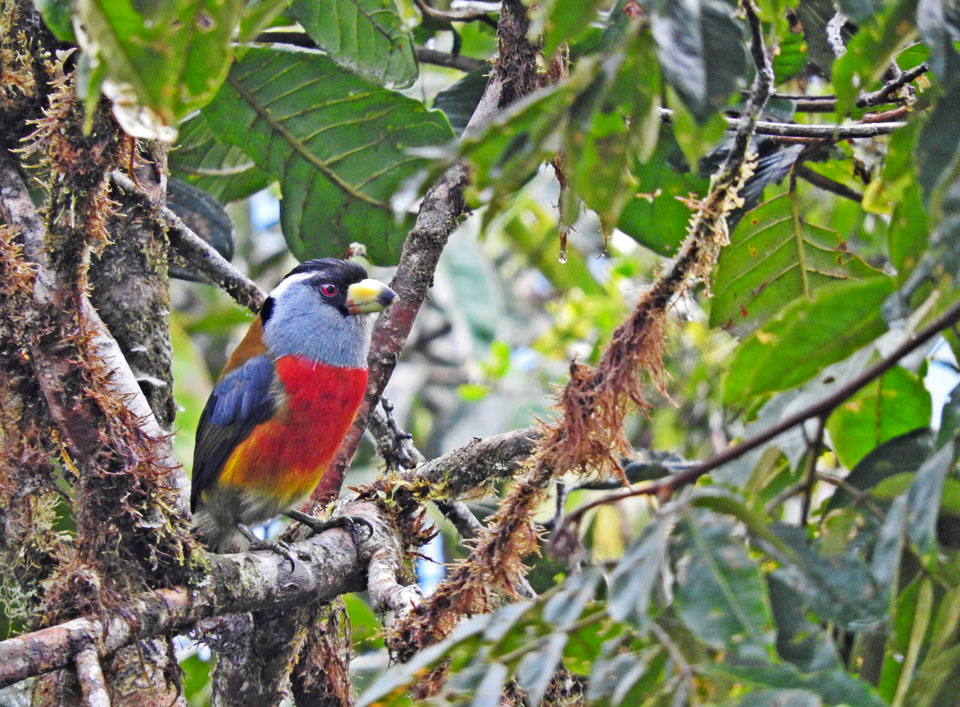
Toucan Barbet. Photo: Chris Bell
After dinner in the Ñambi lodge, we follow Mauricio out into the jungle. He leads us to a dark clearing and instructs us to shut off our torches and close our eyes for a few seconds. When I open them again I am met with one of the most beautiful things I have ever seen: the ground around my feet is glowing with an electric blue light which seems to be emanating from large sticks half-buried in the leaf litter. It’s phosphorescent fungi, explains Mauricio, adhering to the surface of the wood (although it is completely invisible to the naked eye when a torch is shone on it). The light it gives off is strong enough to softly illuminate my hands in the pitch black night and I stand in awe, slowly turning the stick over in my hands, wondering if Colombia will ever stop surprising me.
—
After less than fifteen minutes in the Rio Mira, the sun has proven too much for my pale English skin, so I rather inelegantly wade out of the river to pull on my shirt. I sit on a log on the riverbank and pull my scuffed rubber boots back on, preparing to head back to Tumaco and, the next morning, back up the winding road to Pasto.
Sitting there in the muggy midday heat, it suddenly strikes me that this one road in Nariño represents so much about modern Colombia. There are places like Tumaco and the Mira River, places where people are still caught in the tragic grip of the drug trade, and where the future of Colombia’s peace is likely to be decided. And then there are places like La Planada and Altaquer, which were once plunged into the worst darkness of the Colombian conflict. People were forced from their homes and lost their loved ones. But they returned and, gradually, it has gotten better. Bird festivals are happening, tourists are visiting and young children are envisaging a future of guiding rather than fighting. On that hopeful note, I grab my binoculars and head back up the road; there are still plenty of birds to see before dinner.
Chris Bell is a freelance writer who has travelled to 31 of Colombia’s 32 departments. You can follow his off-the-beaten-track Colombian adventures on Facebook @ChrisBellTravel and Instagram @ChrisBellColombia.


